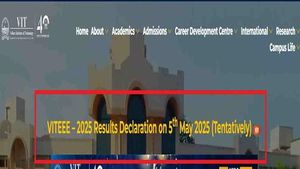Thailand is taking bold steps to revitalize its electric vehicle (EV) market by loosening production regulations. The country's Board of Investment (BoI) announced plans to extend deadlines for EV manufacturers to meet local production quotas, largely motivated by the struggle of domestic demand for electric cars.
Under the current EV 3.0 incentive program, manufacturers are required to have a one-to-one ratio of locally assembled EVs for every imported vehicle. If automakers fail to meet this quota by 2024, they will face stricter measures, such as needing to meet a one-and-a-half to one ratio by 2025. The aim here is not just bureaucratic red tape—it’s about fostering the establishment of EV assembly plants within Thailand, which has already attracted around 80 billion THB ($2.3 billion) of investments.
To support this initiative, the government has decided to extend the domestic production requirements until the end of 2027. This decision is seen as significant amid concerns about stagnant market conditions caused by slow economic growth and stringent credit policies.
The Federation of Thai Industries (FTI) has revised its automobile production forecast for 2024, predicting it to drop to 1.5 million units—their lowest forecast since 2021—citing weak demand as the driving factor. From January to October, the total car sales made a stark nosedive, plummeting by 26.2% year-on-year to 476,350 units. Pickup trucks were particularly hard hit, with sales plummeting by 43%. Analysts attribute these declines to more rigid auto loan regulations alongside rising concerns about non-performing loans and high household debts.
The electric car market is rapidly changing globally, with manufacturers like NIO struggling to maintain their market positions. Investors excited about NIO's prospects are likely feeling disappointed as the stock has lost nearly half of its market capitalization this year. The company's current market cap has dwindled to below $10 billion, far from its peak valuation of over $100 billion early on. NIO, often dubbed the 'Tesla killer,' is now fighting to stay relevant amid fierce competition.
Looking forward, NIO has set ambitious targets, predicting its deliveries will double by 2025, potentially for nearly 450,000 units. This optimistic forecast includes new vehicles under its lower-cost Onvo brand and one model under the Firefly brand set to launch next year. Despite these ambitious plans, analysts remain skeptical. Goldman Sachs has issued downward revisions on NIO's stocks, estimating deliveries will only reach about 337,000 next year, significantly lower than the company’s own targets.
Financially, NIO aims to see its losses narrow as shipments increase and operational expenses decrease. The company’s CEO has set 2026 as the year they hope to achieve breakeven, but many analysts liken this optimism to earlier promises made by Tesla, which have proven overly ambitious.
Despite the challenges, NIO currently holds $6 billion of cash reserves, allowing it to navigate its financial picture without seeking immediate capital. This might prove beneficial, especially as the anticipated economic stimulus from China could provide much-needed support for the EV industry as China contends with challenges of its own.
While the broader EV market is experiencing growing pains, companies like Dodge are generating excitement with their upcoming Charger Daytona EV. Reports indicate Dodge dealers could pocket around $3,246 on each vehicle sold before any additional markups come to play. For consumers eager to own the latest electrified muscle car, the excitement is palpable, but potential buyers should brace for price hikes as dealers navigate demand and supply.
The base Charger Daytona carries a starting MSRP of $57,995 but dealers have already noted they may sell for at least $10,000 over the suggested retail price. The calculations show high profit margins at the dealer level, which is likely to pose challenges for consumers counting on fair pricing.
While Dodge aims for competitive pricing to lure buyers, one must question whether the anticipated pricing strategies will meet the ambitions of both buyers and the manufacturer. Can the Daytona EV maintain interest long enough for sales to exceed expectations? One thing is clear: whether it’s the regulatory atmospheres of markets like Thailand or the strategies employed by American muscle brands, the EV market continues to shape-shift, adapting to customer demand and investor optimism.
This evolution shows no sign of slowing down as the world continues to transition toward greener mobility options. With various approaches being taken across markets, from regulatory easing to manufacturing pivots, the future of electric vehicles remains dynamic and unpredictable.
The need for consumer education, competitive pricing, and respective governmental support cannot be overstated as manufacturers and markets align for what looks to be an electrifying future for the automotive world.
It remains to be seen how these developments will play out and shape consumer preferences moving forward. The intersection of market forces, technological advancement, and regulatory frameworks will dictate the pace and success of the electric vehicle revolution across the globe.



